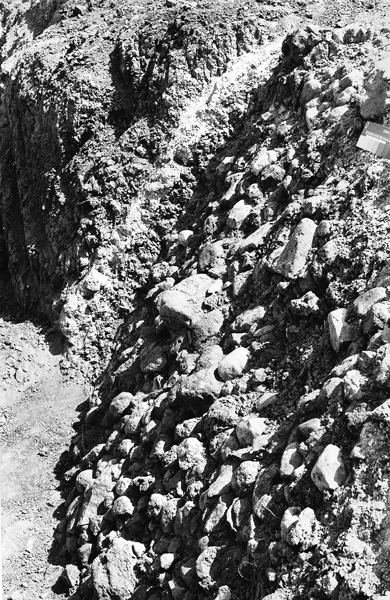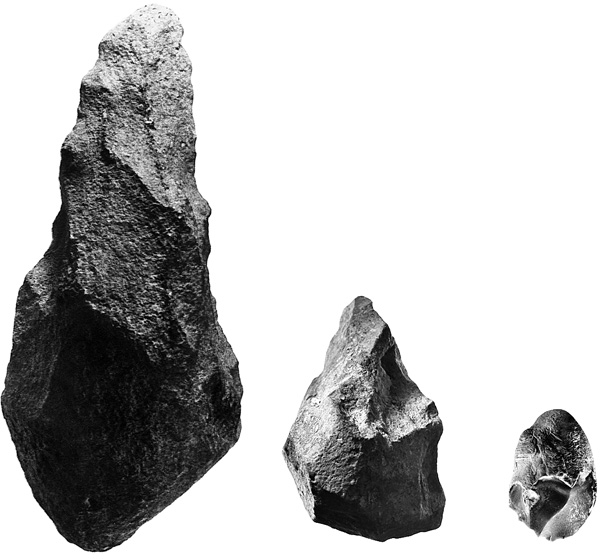‘Ubeidiya
Eight additional excavation seasons were conducted at ‘Ubeidiya from 1988 to 1999. They were under the directorship of E. Tchernov, J. J. Shea, and O. Bar-Yosef, jointly with C. Guérin (four seasons) and G. Bosinski (four seasons). The aim of these eight seasons was to address biostratigraphic comparisons with adjacent regions such as the Caucasus; the formation processes that created the mosaic environments of lake, woodland, and steppe at ‘Ubeidiya; and the question of Lower Pleistocene hominid dispersals as reflected in the behavioral strategies of Homo erectus c. 1.4–1.5 million years ago. While the dating of the Early Acheulian industry at the site remains an important subject, it has yet to be achieved. Its importance is highlighted by the presence of human fossils and an early flake and core industry at Dmanisi (in the Republic of Georgia), which are dated c. 1.7 million years ago. If the latter site represents the first wave of migration “out of Africa,” then it is possible that the Early Acheulian at ‘Ubeidiya represents the second major movement into Eurasia.

The paleontological investigations addressed several particular mammalian groups, including the carnivores, bovids, and cervids (with the participation of B. Martinez-Navarro), accompanied by an overall paleoecological analysis of all the faunal assemblages (M. Belmaker). C. Mallol conducted a micromorphological study, which details the particular depositional environments. Finally, S. Gaudzinski examined the bones for cut marks and intentional fracturing as signs of human activities that can be distinguished from traces of breakage and gnawing by carnivores.

The recent excavations focused on the relatively well-preserved deposits of layers II-12 and III-20 through III-22 in the Lower Limnic member (Li) and the Lower Fluviatile member (Fi) within the ‘Ubeidiya formation. The Fi cycle represents the last stage of a typical depositional sequence of a fluvial fan environment, and the excavated area is at the convergence of the edge of the fan and a palustrine environment where pebbles and sand are washed in by the stream channels and carbonate muds derive from the lakeshore.
The faunal analysis indicates that the dominant paleoenvironment of the archaeological contexts was at the edge of bodies of water, both a lake and several streams flowing from the western hilly area, hence the presence of hippopotamus bones, the remains of numerous carcasses, together with high frequencies of fish and turtles. The species hunted by humans were often those that represent the woodland and parkland environments, such as deer, bovids, and horses. It seems that the common species in these habitats, both in number of specimens and frequencies, are more dominant than previously suggested. Open steppe species are fewer and found in low quantities. Cut marks on the animal bones are rare and there is no evidence for the exploitation of marrow, suggesting that scavenging for marrow following carnivore kills, known from sites in Africa, was not practiced at this site.
A special discovery is the lower right lateral human incisor found in layer I-26a. It belonged to a mature individual and is characterized by small size in the mesiodistal and bucculingual diameters, absence of lingual tuberculum, and the probable absence of the mesial and distal marginal ridges. Although specific taxonomic identification is not possible, this tooth falls in its attributes within the range of Lower Pleistocene hominids.
The artifacts collected during the excavations of the layers mentioned above are not different from those described in the comprehensive report published in 1993. The best-preserved assemblage was in layer II-22, where about 40 percent of the artifacts are in fresh condition. Among the large tools was only one pick in layer II-22, while the rich earlier assemblage of layer II-20 (with 466 items) had none. Among the flakes that dominate each assemblage, there were a few scrapers, notches, and denticulates.
OFER BAR-YOSEF
Eight additional excavation seasons were conducted at ‘Ubeidiya from 1988 to 1999. They were under the directorship of E. Tchernov, J. J. Shea, and O. Bar-Yosef, jointly with C. Guérin (four seasons) and G. Bosinski (four seasons). The aim of these eight seasons was to address biostratigraphic comparisons with adjacent regions such as the Caucasus; the formation processes that created the mosaic environments of lake, woodland, and steppe at ‘Ubeidiya; and the question of Lower Pleistocene hominid dispersals as reflected in the behavioral strategies of Homo erectus c. 1.4–1.5 million years ago. While the dating of the Early Acheulian industry at the site remains an important subject, it has yet to be achieved. Its importance is highlighted by the presence of human fossils and an early flake and core industry at Dmanisi (in the Republic of Georgia), which are dated c. 1.7 million years ago. If the latter site represents the first wave of migration “out of Africa,” then it is possible that the Early Acheulian at ‘Ubeidiya represents the second major movement into Eurasia.
